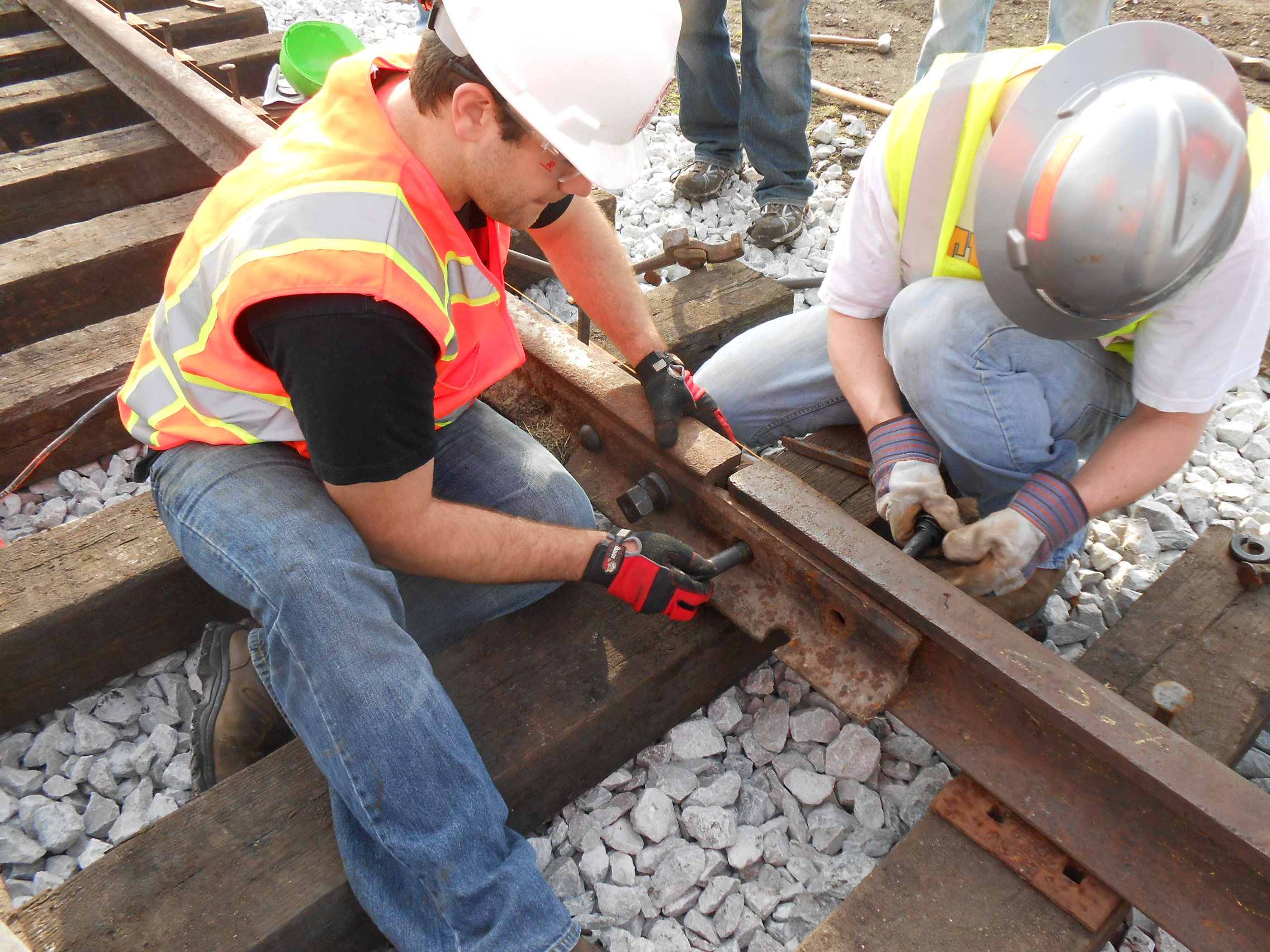Prospective Students
All NURail Center universities have course offerings in rail transportation. In addition to course offerings, there are a variety of research opportunities available for both undergraduate and graduate students in the laboratory, field and office environment. Active student participation in research facilitates experiential learning and the development of skills directly applicable to successful future careers in the rail industry.
Laboratory and Field Research
In the laboratory, students work with a variety of loading equipment and instrumentation to conduct tests on new track components under controlled conditions. Students may also actively participate in field research where instrumentation is installed to collect data on track performance under actual service conditions. Once field and lab data is collected, teams of students process the data and use statistical software to analyze and interpret the results. Other students use these results to construct, calibrate and validate finite element analysis models of the track structure system and develop new mechanistic approaches to track design.
Simulation and Data Analysis
Students may also investigate broader system and network-level engineering challenges that can only be addressed through simulation and data analysis. Students use train operations and dispatch simulation software to investigate the ability of the rail network to support increased freight rail demand and more frequent higher-speed passenger trains. Other students conduct statistical analysis and modeling activities on train accident and derailment data to support railway safety and risk research that ensures the safe and efficient movement of good and people by rail.
 Undergraduate Research
Undergraduate Research
NURail Center Universities actively support undergraduate students participating in rail research activities. Since most rail courses require junior or senior standing, undergraduate research is an excellent way for students who are interested in rail transportation to become involved earlier in college. It also affords an opportunity for students to learn more about the rail industry before being faced with important decisions on technical electives and future career paths.
In the video below, NURail Affiliate member Bryan Schlake, an instructor of Rail Transportation Engineering at Penn State Altoona, discusses why a student should consider a career in the rail industry.
To find a program that best fits you, please look at the websites for each of the NURail Center members.
University of Illinois at Urbana-Champaign
http://railtec.illinois.edu/
University of Illinois at Chicago
College of Engineering
http://engineering.uic.edu/bin/view/COE/UndergraduatePrograms
College of Urban Planning & Public Affairs
http://www.utc.uic.edu/
Massachusetts Institute of Technology
http://web.mit.edu/hsr-group/index.html
Michigan Technological University
http://www.rail.mtu.edu/
University of Kentucky
http://www.ktc.uky.edu/research/public-transit-rail-water/rail/
University of Tennessee Knoxville
http://ctr.utk.edu/training/railroad.html
Rose-Hulman Institute of Technology
http://www.rose-hulman.edu/academics/academic-departments/civil-engineering.aspx

